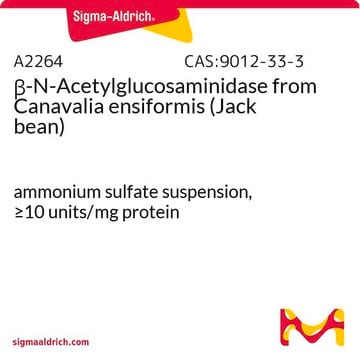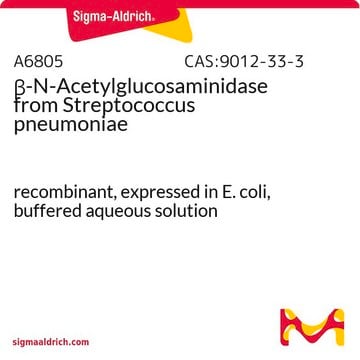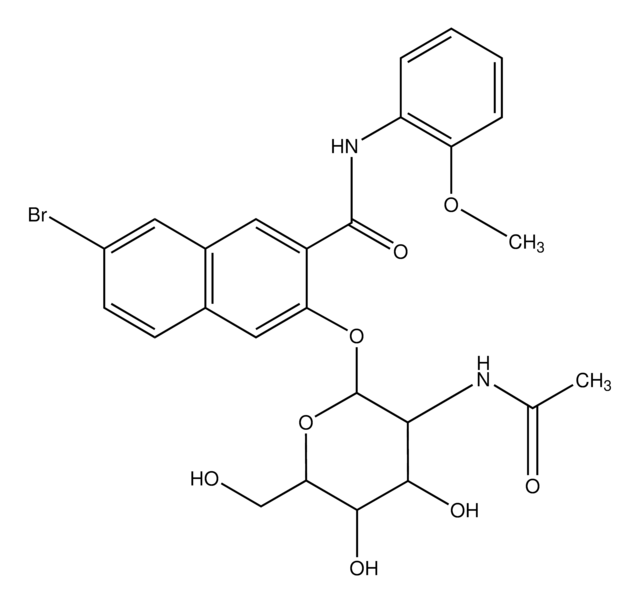10875406001
Roche
N-Acetyl-β-D-Glucosaminidase (NAG)
sufficient for ~50 tests
Sinonimo/i:
NAG
About This Item
Prodotti consigliati
Stato
solid
Livello qualitativo
impiego
sufficient for ~50 tests
PM
105.99 g/mol
Produttore/marchio commerciale
Roche
tecniche
activity assay: suitable
Colore
white to light yellow-brown
Solubilità
water: soluble ~210 g/L at 68 °F (Stop reagent)
soluble ~71 g/L at 32 °F (stop reagent)
water: soluble (Buffer substance, lyophilized substrate)
Compatibilità
suitable for enzyme test
applicazioni
life science and biopharma
Temperatura di conservazione
room temp
Categorie correlate
Descrizione generale
Applicazioni
Confezionamento
Nota sulla preparazione
- Buffer solution
Dissolve the contents of bottle 1 with 55 ml double-distilledwater. - Substrate solution
Dissolve the contents of bottle 2 with 55 ml solution I. - Stop reagent
Dissolve the contents of bottle 3 with 110 ml double-distilled water.
Storage conditions (working solution): Stability of solutions:
Solution II is stable for 1 month when stored at 2 to 8 °C, protected from light.
Solution III is stable for 1 month stored at 2 to 8 °C.
Stability of the sample:
The activity determination of the N-acetyl-β-D-glucosaminidase (NAG) should be carried out directly after collecting the sample. Turbid urines should be centrifuged and the supernatant decanted. NAG is stable for one week at 2 to 8 °C and for one month when stored at -15 to -25 °C.
Stoccaggio e stabilità
Altre note
Solo come componenti del kit
- Buffer Substance consisting of citric acid and potassium citrate
- Lyophilized Substrate consisting of sodium 3-cresolsulfonphthaleinyl-N-acetyl-β-D-glucosaminide and borax
- Stop Reagent consisting of sodium carbonate
Avvertenze
Danger
Indicazioni di pericolo
Consigli di prudenza
Classi di pericolo
Eye Irrit. 2 - Repr. 1B - STOT SE 3
Organi bersaglio
Respiratory system
Codice della classe di stoccaggio
6.1C - Combustible acute toxic Cat.3 / toxic compounds or compounds which causing chronic effects
Classe di pericolosità dell'acqua (WGK)
WGK 2
Punto d’infiammabilità (°F)
does not flash
Punto d’infiammabilità (°C)
does not flash
Scegli una delle versioni più recenti:
Possiedi già questo prodotto?
I documenti relativi ai prodotti acquistati recentemente sono disponibili nell’Archivio dei documenti.
I clienti hanno visto anche
Il team dei nostri ricercatori vanta grande esperienza in tutte le aree della ricerca quali Life Science, scienza dei materiali, sintesi chimica, cromatografia, discipline analitiche, ecc..
Contatta l'Assistenza Tecnica.












